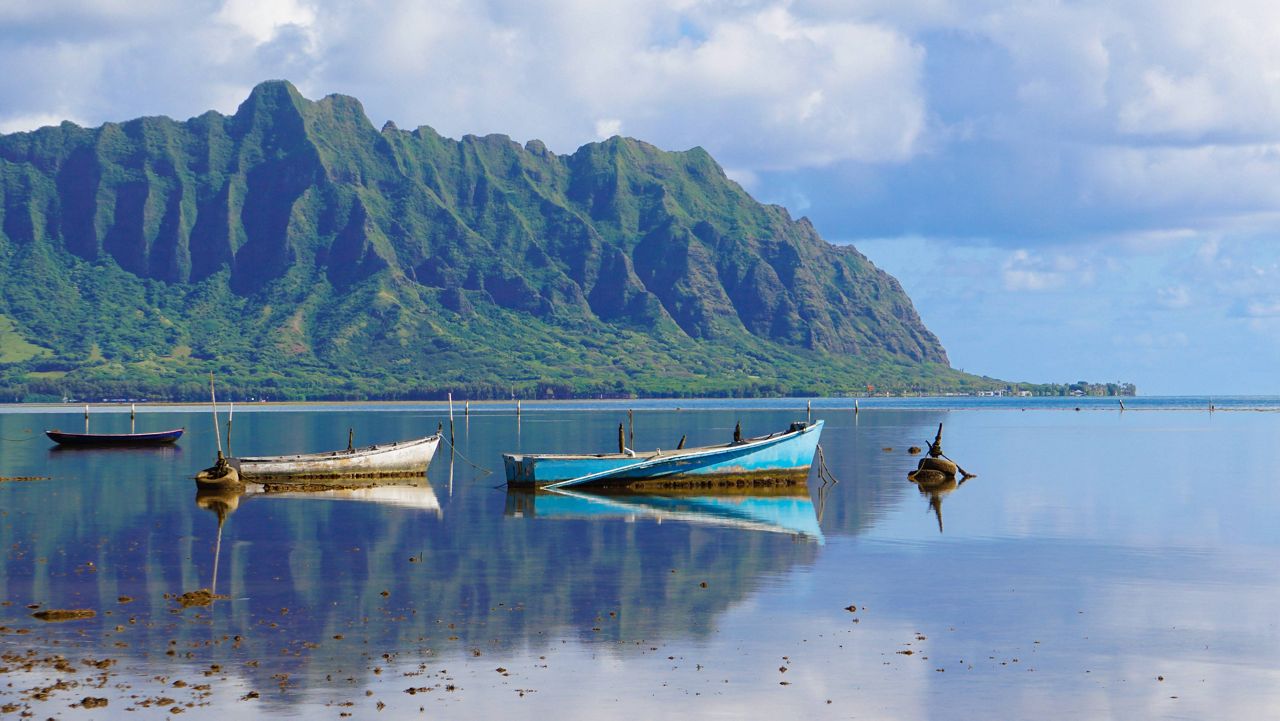HONOLULU — A 2021 report released this month by Surfrider Foundation shows that parts of Honolulu, Kaneohe Bay and Haleiwa have chronically high levels of pollution in the water.
Surfrider’s Blue Water Task Force sampled 23 sites for a fecal bacteria known as Enterococcus, which comes from human and animal waste and may threaten public health and coral reefs. In humans, Enterococcus has caused urinary tract infections, meningitis, gastrointestinal symptoms, rashes, eye infections and more.
The report showed six of the sites regularly tested exceed the Department of Health’s standards for a single sample, which are set at 130 Enterococcus forming units per 100mL sample.
On the North Shore, Chocolates, a surf break at Haleiwa Beach Park, had 95% of its samples exceed health standards. On the East side, Kahaluu, Hakipuu Boat Ramp and Waiahole had at least 77% of their samples exceed the state health standards, while Kuliouou Stream was in excess in 88% of the samples. In Honolulu, Magic Island near the canoe launch, which is at the entrance to the Ala Wai Canal, exceeded the state health standards in 50% of the samples.
Volunteers collected the samples every other Sunday, which were tested at University of Hawaii labs. The results are posted online the following day, so swimmers, surfers and boaters can check them before heading to the ocean.
Kahaluu, Hakipuu and Waiahole are all in areas known to have a high concentration of coastal cesspools and the high-levels of fecal bacteria found in the water indicate sewage is affecting these areas.
“Our data indicates that coastal cesspools are likely contributing to high bacteria readings in certain areas of the island,” said Dr. Dan Amato, Coordinator of the Oʻahu Blue Water Task Force, in the press release. “In addition, large storms can contribute to elevated bacteria levels in coastal areas as flowing streams wash everything from upstream — pollutants, bacteria, nutrients, pesticides — into the ocean.”
In Hawaii, cesspools are a major source of sewage as it slowly leaks into the ground and eventually flows into the ocean. There are more than 80,000 cesspools in the islands, and on Oahu there are 11,300 cesspools that discharge 7.5 million gallons of untreated sewage into the environment every day, according to Surfrider Foundation.
Just this month, warnings were issued to avoid Kailua Bay near the Marine Corps Base Hawaii, because a reclamation facility leaked fecal bacteria, and Kaneohe Bay near Kahaluu due to wastewater discharge that was leaking from a septic tank. While septic tanks are considered better than cesspools, they also leak when cracked or experiencing other problems.
Hawaii banned large-capacity cesspools in 2016. Another local law passed the following year requires all cesspools to be replaced by 2050. Homeowners can replace cesspools with advanced septic or individual wastewater systems. Surfrider Foundation is also advocating for a new legislative bill that would require cesspools to be converted within a year after a property is sold.
“Converting your cesspool is the No. 1 way that homeowners can help improve coastal water quality across the islands,” said Lauren Blickley, Hawaii Regional Manager for Surfrider Foundation, in a press release.
The 2017 law also mandated the Department of Health investigate high-priority cesspools that impact human health, drinking water and sensitive streams or coastal waters. Surfrider Foundation said it hope the report will be helpful in identifying chronically polluted waters that the DOH should prioritize for monitoring and further investigation.
Also, many of the coastal waters with high levels of Enterococcus are near the mouths of rivers, indicating that land-based runoff is carried by freshwater streams into the ocean, according to the Surfrider Foundation. One example of this is Kahaluu, which is at the mouth of a river, in addition to being located in an area with many cesspools. Swimmers should avoid coastal areas near rivers, especially after heavy rains, that can prompt Brown Water Advisories.
“We strongly recommend that the public stay out of the water if it is brown. The brown water indicates runoff from upslope areas and we often find elevated bacteria levels,” Amato said.




